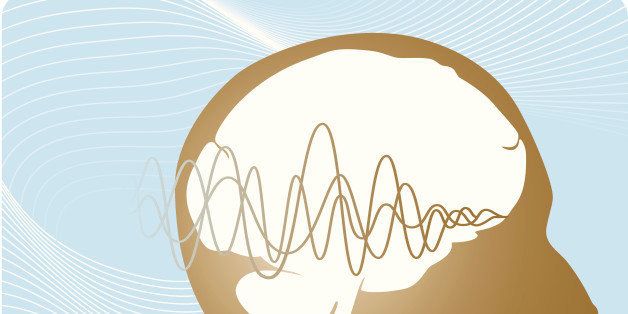
By Susan E. Matthews
The dangers of getting a concussion while playing sports has dominated the headlines over the past few weeks. First, several former NFL players admitted they had been diagnosed with CTE (chronic traumatic encephalopathy), a progressive neurological disease thought to result from taking chronic hits to the head, including concussions. Days later, ESPN reported that between 2010 to 2012, Pop Warner youth football saw 23,612 kids stop participating, likely due to the mounting concerns that the sport leads to harmful concussions.
Today, a new study suggests that the damage incurred from a concussion takes longer to heal than expected -- a full four months in some cases. Though the study was small and is only preliminary, the results may have implications for how soon players are able to return to play after suffering a tough hit.
More from Everyday Health:
Vitamin D Deficiency Over-Diagnosed in African Americans
Weight Loss Helps Afib Patients Control Symptoms
Quitting Smoking Reduces Heart Risk Faster Than Previously Thought
The research paper, from researchers at the University of Mexico, tracked 50 people who had mild concussions, but had not experienced any other type of concussion that year. They conducted brain scans of the concussed, as well as testing their memory, depression, thinking skills and anxiety two weeks after a concussion. After four months, the research brought 26 of the concussed back into testing, and they compared them to a control group, the paper, published in Neurology, reported.
Lack of Symptoms Doesn't Mean Recovery
As expected, two weeks after the concussion, the concussed patients reported noticeable effects of their injury, from dizziness to headaches to problems with memory than the control groups. By four months out, the concussed patients reported significantly lower side effects, and seemed closer to the control group.
The brain scans, however, told a different story.
Using a strong MRI machine, the researchers identified the injured places in the brain by looking at the way water moved inside the brain. After an injury, water is allocated differently in the brain, to the point that it's observable via this strong MRI, said study author Andrew R. Mayer, PhD, of the Mind Research Network and University of New Mexico School of Medicine in Albuquerque.
The researchers found that this injury-indicating measurement, called fractional anisotropy (FA), was elevated both two weeks after the concussion and four months out, meaning that concussive symptoms last for much longer than they can be felt.
"With more detailed and sophisticated brain tests like this MRI, more things can be found than can be found with just psychological testing," said Julian Bailes, MD, co-director for NorthShore University HealthSystem's Neurological Institute based in Evanston, Ill. Dr. Bailes, who was not involved in the study, is a pioneer in research on CTE, and is currently working with other researchers to identify CTE in the brains of former NFL players while they're still alive. Though the Mayer's study is small, the implications are concerning, he said.
"Typically, with most mild traumatic brain injuries, people report feeling better within a week or two, and three months post, almost everyone feels better," Dr. Mayer said. Unfortunately, that doesn't mean you actually are better, Mayer said, likening it to how a cut scabbing over causes it to stop hurting, but the cut still isn't completely healed. "With other tissues, we have a much better understanding of how things heal, but with the brain, we don't have that understanding," he said.
Could Brain Scans Assess Readiness-to-Play?
What's worrisome about this slow healing is that if people go back to their normal activities, particularly playing contact sports, they're more likely to get injured again, which could result in a worse reinjury. While the level of reinjury hasn't been tested in humans, Mayer said animal models have suggested this theory is correct.
"I think the findings do bear on when it might be safe to return to play," Mayer said.
Currently, there is no objective way to determine when the symptoms of a concussion have subsided enough so that it's safe to return to play -- often it depends on the player's subjective assessment.The Centers for Disease Control and Prevention estimate that 1.5 deaths occur each year from sports-related concussions, and information on the American Association of Neurological Surgeons suggests deaths most often result when the person suffers multiple concussions.
If the MRI technique used in the study continues to evolve, using it could create a standard measure of recovery. This could be used in return-to-play decisions, Mayer said.
"This is a very detailed and expensive test -- I'm not sure how soon it's going to be mainstream for return-to-play, but it could be very viable," Bailes said.
Bailes' own work has benefited from technological innovation in scanning. He described his work as "early clinical research in human subjects," and with a team at the University of California in Los Angeles, he's been able to analyze tau protein deposits in the brain via PET scanning.
His subjects are former NFL players who have experienced continuous head trauma, and may have CTE. The work is particularly important because formerly, CTE could only be diagnosed post-mortem, by examining the brain in an autopsy. "It's the only way that's known to diagnose tau protein in living people," Bailes said.
Because some of the consequences of CTE include mood disorders such as depression, the condition is associated with suicide risk. Having a diagnosis while the patient is still alive could help the patient reach out to the appropriate health care professionals.
"Damage From Concussions Lasts Up to Four Months" originally appeared on Everyday Health.